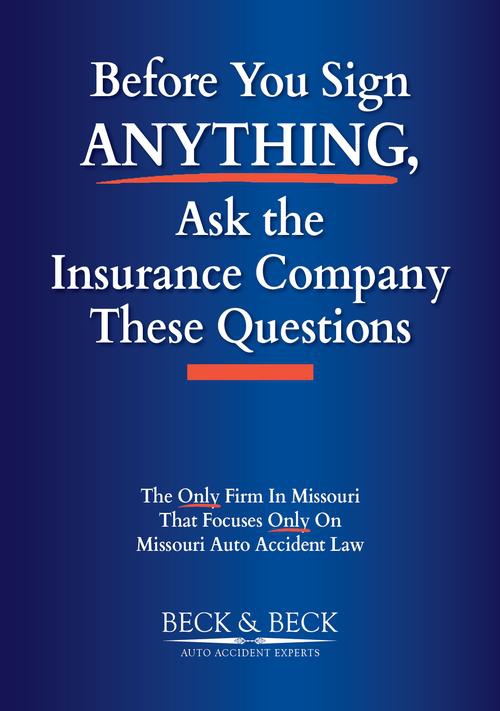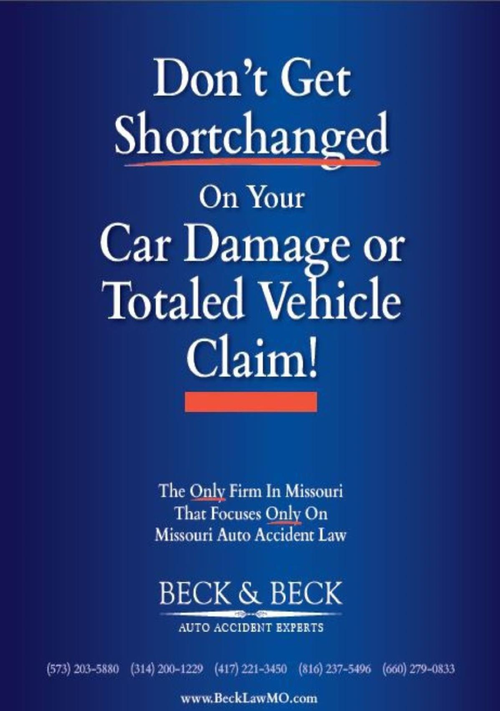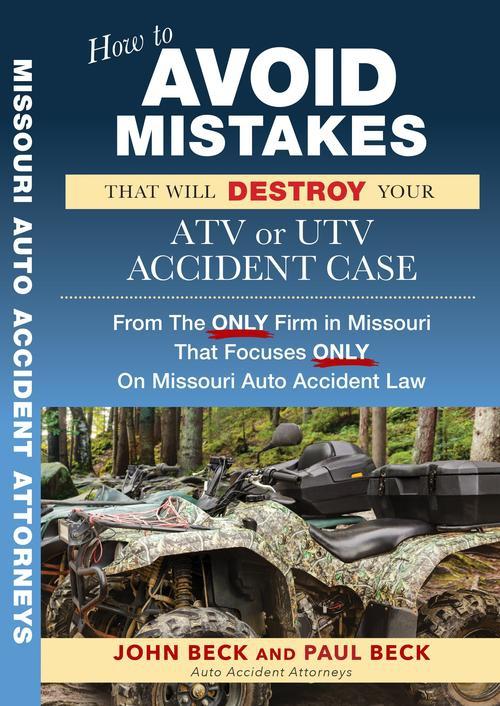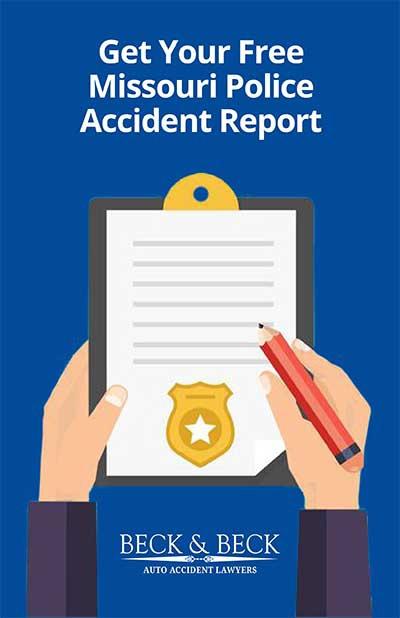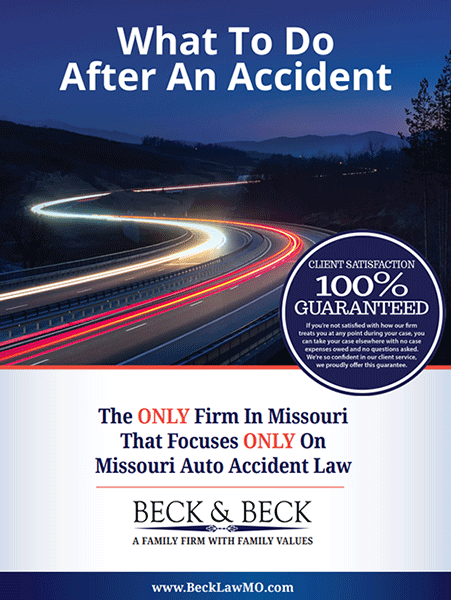In Missouri, to prove liability in a bicycle accident claim you have to demonstrate that negligence by another person caused the accident. The key is to prove that the at-fault parties breach of the duty of care resulted in the accident and the injuries you sustained.
Determining Fault in a Bicycle Accident
Establishing who is at fault in a bicycle accident in Missouri requires proving four key legal elements:
1. Duty of Care
Every motorist, cyclist, and driver owes others a legal duty to act reasonably and avoid causing harm. For drivers, this means following traffic laws, yielding when required, and keeping a safe distance from cyclists as required by Missouri’s three-foot passing law as specified in RSMo §304.678.
Cyclists also have duties, such as riding with traffic and using proper lighting at night.
If the driver committed an irresponsible action such as not yielding the right-of-way, liability will fall on him. However, if you weren’t using proper lighting at night and due to the poor visibility the driver hit you, then it would be a case of shared liability.
2. Breach of Duty
You must show that the at-fault party violated that duty. Breaches in bicycle cases often include:
- Not giving way when turning across a bike lane.
- Driving while distracted or under the influence of drugs or alcohol.
- Opening a car door into the path of a cyclist, commonly referred to as “dooring.”
- Driving at excessive speeds or overtaking too closely.
- Neglected roadways or construction areas lacking adequate warning signs (in instances of municipal liability).
Evidence of a traffic law violation can also establish negligence per se—meaning the violation itself proves negligence, provided the law was designed to protect cyclists.
3. Causation
It’s not enough to just show that someone broke the law; you must also demonstrate how their actions contributed to your accident. This usually means to gather:
- Accident reconstruction analysis to show how the collision happened.
- Eyewitness reports or video evidence confirming the driver’s actions.
- Expert testimony about the impact mechanics that caused your injuries
Defense lawyers often assert that the cyclist was at fault or that the collision was caused by an unrelated factor. In your case, the accident and the breach must be directly related.
4. Damages
Lastly, you have to demonstrate that you were harmed. This may include:
- Future medical costs and medical bills.
- Reduced earning potential and lost wages.
- Suffering, agony, and irreversible disability.
- Damage to your bicycle and other personal property.
With the assistance of our experienced Missouri bicycle accident lawyers, and through expert assessments, treatment notes, and medical records this part of the claim can be strengthened.
Insurance and Legal Options
Most bike accident cases start with the driver’s insurance company. Because Missouri is an at-fault state, their insurer should pay for your injuries. But don’t expect them to make it easy. They’ll almost always argue you share some of the blame—because under Missouri’s pure comparative fault rules, the more fault they pin on you, the less they have to pay.
If they won’t offer a fair settlement, or if your crash involved a dangerous road or poor city maintenance, a lawsuit might be necessary. Claims against government agencies are tricky. There are tight deadlines and special rules, so you can’t wait too long to act.
Who Can Be Held Liable For a Bicycle Accident
Liability for a bicycle accident can involve more than just the driver of a car. Depending on the circumstances, several parties may bear responsibility:
- Motor Vehicle Driver
- Cyclist
- Government Entity
- Vehicle or Bicycle Manufacturer/Maintenance Provider
- Employer of the Driver
- Third Parties
Examples of Driver Negligence
Missouri’s traffic laws, including its right-of-way rules, are designed to prevent collisions and protect all road users, even cyclists. They dictate who must yield in different traffic situations and are intended to reduce confusion and accidents. Ignoring them not only leads to crashes but can also result in serious legal consequences.
Drivers are required to yield appropriately at intersections, roundabouts, crosswalks, and when making turns. Because they have a legal duty to respect the right-of-way of others, failing to do so is often considered negligence. In fact, violations of these rules are frequently used as evidence of fault in personal injury cases.
Some common examples of driver negligence in bicycle accident cases include:
- Failing to yield to a cyclist in a crosswalk, at an intersection, or when turning across a bike lane.
- Speeding or driving too fast for road or weather conditions, reducing reaction time and increasing stopping distances.
- Distracted driving, such as texting, using a GPS, or handling in-car controls while approaching cyclists.
- Running a red light or stop sign, putting cyclists in cross-traffic at risk.
- Making unsafe lane changes or turns without checking mirrors or blind spots for cyclists.
- Not looking for bikes before opening a car door into the path of a cyclist (dooring).
These types of conduct frequently lead to serious, preventable crashes. To succeed in a personal injury claim, an injured cyclist must present evidence directly linking the driver’s negligent act to the collision.
When Fault is Shared
Bicycle accidents are rarely black and white when it comes to fault. Although bicyclists often suffer more severe injuries in collisions, Missouri law treats bicycles as vehicles, meaning cyclists are held to the same rules of the road as motorists.
In this cases cyclist can be held liable of an accident:
- Violating traffic laws: Running a red light, failing to yield to oncoming vehicles, or ignoring stop signs can place significant fault on the cyclist.
- Riding under the influence: Even though Missouri doesn’t treat biking under the influence like a DUI, it can still hurt your case. If you were impaired by alcohol or drugs, you could be held responsible for causing the crash.
- Reckless riding: Swerving through traffic, riding too fast for the conditions, or not signaling your turns are all things the other side can use as evidence that you were negligent.
- Riding on sidewalks in prohibited areas: In business districts, sidewalk riding is illegal and endangers pedestrians. A cyclist who strikes a pedestrian can be held responsible for those injuries.
- Riding the wrong way: Cyclists must ride in the same direction as vehicle traffic. Riding against traffic often leads to head-on or side-swipe collisions.
- Riding without proper lighting at night: Missouri law requires headlights visible from 500 feet. Failing to use proper lighting can contribute to fault if a driver could not reasonably see the cyclist.
In all these scenarios, the cyclist’s actions may not completely bar recovery but can reduce compensation under Missouri’s comparative negligence rules.
When Third Parties May Be Liable
Not all bicycle accidents are the fault of the biker or the car. Other parties can have a significant impact as well.
- Government entities may share responsibility when dangerous road conditions are involved. Poorly designed intersections, missing signage, or neglected potholes can create hazards that lead to serious accidents. However, these claims are difficult, as Missouri’s sovereign immunity statutes limit when a government entity can be sued and impose rigorous notice requirements.
- Manufacturers or maintenance providers can also be liable. If a defective bicycle part—such as faulty brakes, steering components, or tires—played a role in the accident, the manufacturer or a negligent repair shop may be held responsible under Missouri product liability laws.
- Other individuals: A pedestrian stepping into a bike lane, another cyclist riding unpredictably, or a property owner creating dangerous roadway conditions may also share in the fault.
These third-party claims often require expert testimony, such as accident reconstruction or product defect analysis, to prove liability.
Missouri’s Pure Comparative Negligence Law
Missouri’s pure comparative negligence system allows injured parties to recover compensation even if they are partially at fault. Each person involved is assigned a percentage of responsibility, and any compensation is reduced by that percentage.
Comparative negligence plays a major role in bicycle accident cases because fault is often shared among drivers, cyclists, and sometimes third parties. Insurance companies frequently try to shift more blame onto the cyclist to limit payouts, which makes strong evidence, expert testimony, and experienced legal representation critical to protecting your claim.
Evidence to Prove Fault
Building a strong bicycle accident claim depends on solid evidence. The goal is to show how the crash happened, who was responsible, and how it affected you.
Physical Evidence
- Scene documentation: Pictures of the road, the damage to the car and bike, the skid marks, and the trash help put the events in order. Footage from security cameras or dash cams can be even more important.
- Medical records: Treatment notes, diagnostic reports, and rehabilitation records show the extent of your injuries and link them directly to the crash.
- Financial documentation: Medical bills, repair invoices, and proof of lost wages demonstrate the economic impact of the accident.
Testimony
- Your statement explaining what happened and how the injuries have changed your daily life adds context that medical records alone can’t provide.
- Eyewitness accounts can confirm key details and help counter attempts to shift blame.
- Accident reconstruction specialists can clarify how the crash occurred, while medical experts explain the seriousness of your injuries and future care needs.
Timely collection is critical. Surveillance footage is often erased within days, and witness memories fade quickly. Well-documented evidence makes it much harder for an insurer to dispute liability or undervalue your claim.
Knowledgeable Missouri Bicycle Accident Law Firm
At Beck & Beck Missouri Car Accident Lawyers, we know how hard recovery can feel. Our job is to take on the tough parts, such as gathering evidence, talking with witnesses, and working with experts to show what really happened and relieve you of that weight.
Even if you’re worried you might share some fault, Missouri law still lets you seek compensation. We’ll make sure your side of the story is heard.
If you’re recovering from a bike accident in Missouri, you don’t have to go through this alone. Get in touch with us for a free consultation; we’re here to help you move forward.
Related Articles
Determining the value of a bicycle accident claim in Missouri

